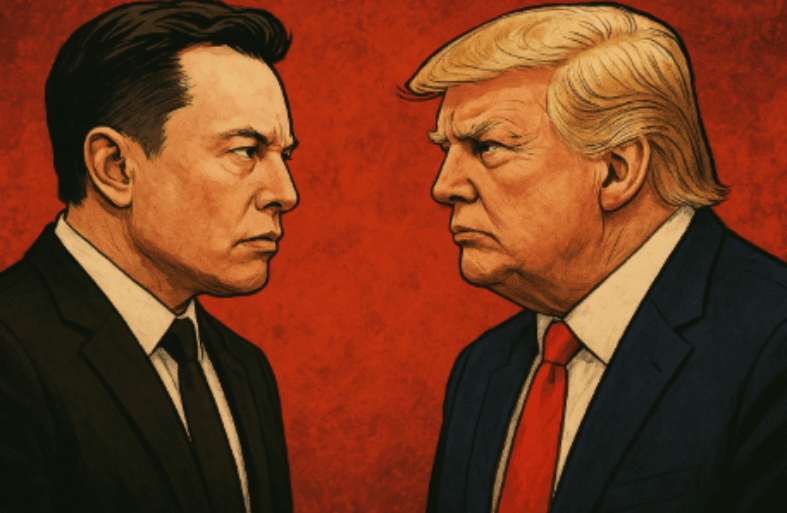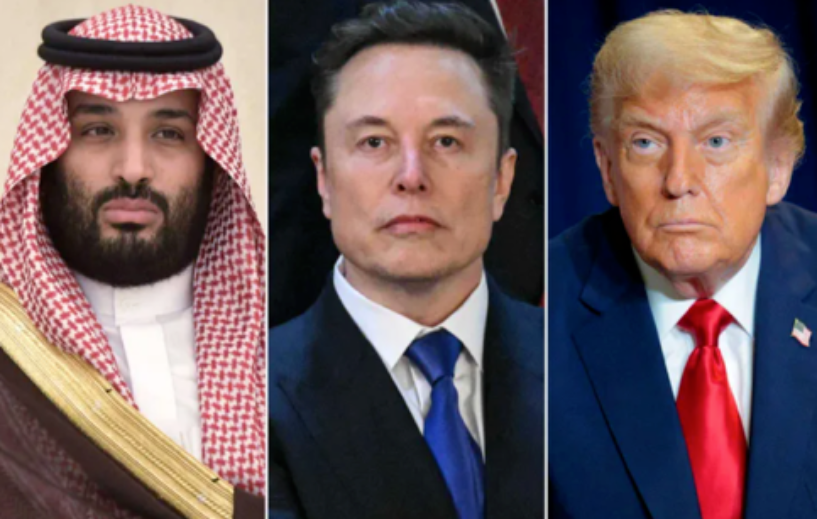The once high-profile U.S. Department of Efficiency has quietly come to an end, and the relationship between Musk and Trump, intertwined with interests and power, has experienced a roller coaster of fluctuations.
On November 23 local time, the 'Department of Efficiency' (DOGE), established on the first day of President Trump's tenure and led by Musk and Ramaswamy, has quietly been dissolved with eight months left on the contract.
The Director of the U.S. Office of Personnel Management confirmed that it has 'ceased to exist,' and its multiple functions have been taken over by the Office of Personnel Management. This department, which once vowed to cut federal spending, began in controversy and ended in calm.
 One, the rise and fall of the Department of Efficiency
One, the rise and fall of the Department of Efficiency
The Department of Efficiency lasted only ten months from its establishment to its dissolution. On January 20, 2025, Trump signed an executive order to establish this advisory committee on the day of his inauguration. The former head of the department was Elon Musk, and the acting director was Amy Gleeson.
● The Department of Efficiency was a temporary department and not a formal U.S. federal government agency, and could only provide advice and guidance externally. According to the original plan, this department was to be dissolved before July 4, 2026.
● The establishment of the department stemmed from the concept of a "Government Efficiency Committee" proposed by Musk and Trump during a live broadcast on social media X in August 2024. Musk indicated at the time that he hoped to lead this department to combat waste in U.S. government agencies.

The actual effectiveness of the Department of Efficiency during its tenure fell far short of expectations.
● According to data from the Department of Efficiency's website, as of April 20, the department had saved approximately $160 billion for the federal government. However, this is only less than one-fifth of Musk's previously announced goal of cutting $1 trillion in federal spending.
● Despite implementing massive layoffs, agency shutdowns, contract reductions, and cuts to public services, the spending of this administration has not decreased compared to the same period last year but has increased instead. On November 23, reporters learned that the Department of Efficiency had been quietly dissolved with eight months left before the contract expired. Previously, personnel from the Department of Efficiency had gradually left headquarters in the summer, further deepening the judgment of its premature termination.
Two, radical reform
● In just a few months, the Department of Efficiency implemented a series of radical measures. On the evening of February 2, the department launched a raid and formally "took over" the U.S. Agency for International Development (USAID), which has a history of over 60 years, and prepared to make it "close its doors for good."
● Shortly after midnight local time on February 3, employees of the U.S. Agency for International Development received an email informing them that they would not need to return to the Washington headquarters building after dawn.
● On February 3, media reports indicated that the Department of Efficiency was considering using administrative means to dissolve the U.S. Department of Education.
● On February 6, sources revealed that the Trump administration planned to reduce the total number of employees at the U.S. Agency for International Development from over 10,000 to 294, a plan that would be led by the Department of Efficiency.
● On February 7, Trump stated that he had instructed the Department of Efficiency team to review the spending of the U.S. Department of Defense.
Three, the contradictions begin to emerge
The radical measures of the Department of Efficiency quickly triggered a backlash from various parties. In February 2025, Trump assigned the Department of Efficiency to audit over a dozen federal government departments, including the Treasury and the Defense Department, triggering a wave of bipartisan conflict and lawsuits.
● U.S. media expressed concern that after the Department of Efficiency began its actions, American politics had fallen into chaos, potentially triggering a "constitutional crisis." Some Democratic lawmakers issued an open letter calling for an investigation into Musk and the Department of Efficiency, claiming it "could threaten national security."
● On February 7, CNN obtained an internal threat assessment from the U.S. Department of the Treasury. The assessment showed that the Department of Efficiency's access to the Treasury's central payment system posed an "unprecedented internal threat risk" to Treasury information.
Four, Musk's resignation
● By the end of May, Musk's relationship with the Department of Efficiency underwent a significant change. On May 28, Musk said on social media that his term as a "special government employee" had ended.
● On May 29, Trump posted on social media that May 30 would be Musk's last day at the Department of Efficiency.
● White House Press Secretary Caroline Levitt stated on May 29 that cabinet members "have been closely collaborating with Musk and will continue to work with the politically appointed employees of the Department of Efficiency." Musk's radical layoffs and budget cuts during his tenure at the Department of Efficiency faced widespread criticism.
Five, the root of the rupture
The direct trigger for the rupture in the relationship between Musk and Trump was a bill called "Big and Beautiful." In early June, Musk fiercely criticized the "Big and Beautiful" bill promoted by Trump on social media. Musk called this bill "absurd" and "disgusting," and stated it would lead to an increase of $2.4 trillion in the U.S. fiscal deficit.
● The "Big and Beautiful" bill is a massive tax and spending bill, including a $5 trillion tax cut plan and an $780 billion reduction in healthcare subsidies, while raising the debt ceiling by $4 trillion.
● The two most painful points in the bill for Musk are the cancellation of the electric vehicle tax credit and the abolition of the carbon emissions trading system. The latter is particularly fatal for Tesla — in the first quarter of 2025, Tesla earned $595 million just from selling carbon credits, exceeding the net profit of $409 million during the same period.
Six, public conflict
● The dispute between Musk and Trump became public on June 5 and quickly escalated. Trump expressed that he was "very disappointed" in Musk and called him "crazy." Musk quickly responded on social media, rebutting that "you are very wrong, this bill was never shown to me and was passed quickly in the middle of the night!"
● Trump also threatened to cut government subsidies and contracts related to Musk's companies. In response, Musk stated that, given Trump's statement about canceling government contracts, SpaceX would immediately begin to retire its "Dragon" spacecraft.
● However, under netizens' "mediation," Musk backtracked and stated that he "would not allow the Dragon spacecraft to retire." This public conflict caused Tesla's stock price to plummet 14.26% that day, evaporating $152 billion in market value, setting a record for the largest single-day drop in history.
Seven, warming relations
● Less than six months after the public conflict, there were signs of a thaw in the relationship between Musk and Trump. On November 19, 2025, Musk returned to the White House to attend a dinner welcoming Saudi Crown Prince Mohammed bin Salman.
● This move indicates that the tension between the world's richest person and the U.S. president has eased since the fierce disagreements over deficit spending issues earlier this year. Musk was invited as a guest to attend this welcoming dinner, which included many business giants such as Tim Cook, David Ellison, Marc Benioff, Bill Ackman, and Jensen Huang.
● The scene also included sports star Cristiano Ronaldo, as well as Republican political leaders such as Vice President JD Vance and House Speaker Mike Johnson.

The dissolution of the Department of Efficiency marks the end of a radical government reform experiment. From a high-profile start to a quiet conclusion, the existence of this temporary department was brief yet full of controversy. The relationship between Musk and Trump, like the fate of the Department of Efficiency, has undergone a rollercoaster ride from high-profile cooperation to public opposition, and then to warming relations.
The split and reunion of two powerful figures not only reflect the contest of personal interests but also reveal the complex nature of the relationship between capital and power in American politics.
Join our community to discuss together and become stronger!
Official Telegram community: https://t.me/aicoincn
AiCoin Chinese Twitter: https://x.com/AiCoinzh
OKX benefit group: https://aicoin.com/link/chat?cid=l61eM4owQ
Binance benefit group: https://aicoin.com/link/chat?cid=ynr7d1P6Z


